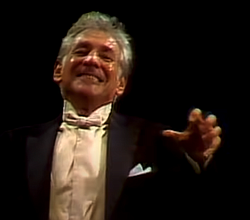Ravel, Bates, and Respighi at San Diego Symphony
Gil Sherman's performance of Fragile Light left me near brink of complete emotional episode.
The San Diego Symphony concert on Sunday, February 25, featured two pieces of music for which I have great affinity, one for which I have great respect, and one for which I had no knowledge whatsoever. Symphony music director Rafael Payare conducted.
Let’s start with my ignorance. Nomad Concerto by Mason Bates received its West Coast premiere. The piece is a violin concerto written for violinist Gil Shaham who performed it here. Mason Bates was in attendance and made some remarks about his composition before it was performed.
What I like most about Bates’s music is his willingness to indulge in beautiful sounds. It struck me that this is, perhaps, my biggest gripe about a lot of new music. It is often interesting and it is often impressive but rarely does a new piece strike me as beautiful. As I took in this new piece by Mr. Bates, I found myself wishing he would be even more indulgent with us.
I have been a big Gil Shaham fan since I heard his recording of violin concertos by Samuel Barber and Erich Korngold, which was issued by Deutsche Grammophon in 1994. Previously, his performance of David Bruce’s Fragile Light left me near the brink of a complete emotional episode. His playing of Nomad Concerto was brilliant and that was no surprise.
The piece of music for which I have great respect is Bolero by Maurice Ravel. I enjoyed the performance, which concluded the concert, but I must admit that I don’t voluntarily listen to the piece during my own leisure time. I am always happy to see it programmed but there are other pieces, of similar length, that I would rather hear in a concert setting.
My affinity for The Pines of Rome by Ottorino Respighi cannot be overstated. I never get tired of this piece. The second section, “Pines Near a Catacomb” is brilliant. Respighi places a trombone offstage. Of course, the trombone was an instrument that was only used in sacred music until the finale of Beethoven’s Symphony No. 5. The offstage trombone is the voice of the ancient church rising in, all of its mystery, from the depths of the catacomb.
The third section is famous for using the recorded song of the nightingale in the score. I must admit that I found the birds to get a bit out of hand in this performance.
The final section depicts the ghosts of the Roman Legion marching past the pines of the Appian Way. I was looking forward to hearing maestro Payare conduct this piece because I thought it would be appropriately rambunctious and, indeed, it was.
My daughter and son were able to attend this concert with me and I asked them which piece was their favorite. They both said the first piece of the concert which was Ravel’s La Valse. It’s hard to argue with their choice. La Valse is an absolute masterpiece musically, conceptually, and emotionally and the San Diego Symphony delivered the goods.
